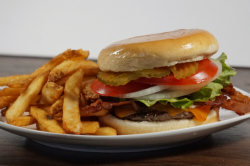Cosmic rays used to identify a hidden pyramid chamber. Particle physicists have uncovered a large, hidden void in Khufu’s Pyramid, the largest pyramid in Giza, Egypt—built between 2,600 and 2,500 B.C. The discovery, published in Nature, was made using cosmic-ray-based imaging and may help scientists work out how the enigmatic pyramid was actually constructed. The technology works by tracking particles called muons. They are very similar to electrons—having the same charge and a quantum property called spin—but are 207 times heavier. This difference in mass is quite important as it turns out it determines how these particles interact when hitting matter.
Two parts of brain communicate during sleep, make memories. Using an innovative "NeuroGrid" technology, scientists showed that sleep boosts communication between two brain regions whose connection is critical for the formation of memories. The team was surprised to find that the ripples in the association neocortex and hippocampus occurred at the same time, suggesting the two regions were communicating as the rats slept. Because the association neocortex is thought to be a storage location for memories, the researchers theorized that this neural dialogue could help the brain retain information.
E-textiles for military and emergency personnel. New technology that harnesses electronic signals in a smart fabric could lead to advanced hazardous-material gear that protects against toxic chemicals, according to research from Dartmouth College. The advancement could have big implications for the military, emergency service personnel and other workers that rely on "haz-mat" protection to perform their work and keep others safe.
4D printing of programmable shape-changing structure. A new study describes printing of Shape Memory Polymers to produce active meta-materials that can be programmed to form versatile shapes and are then able to recover their original state when heated to above their activation temperatures.
Love actually: What makes people feel loved? Respondents of a study by Penn State University came to a general consensus that it may be small gestures that matter most. Researchers found that small, non-romantic gestures -- like someone showing compassion or snuggling with a child -- topped the list of what makes people feel loved. Meanwhile, controlling behaviors -- like someone wanting to know where they were at all times -- were seen as the least loving.




